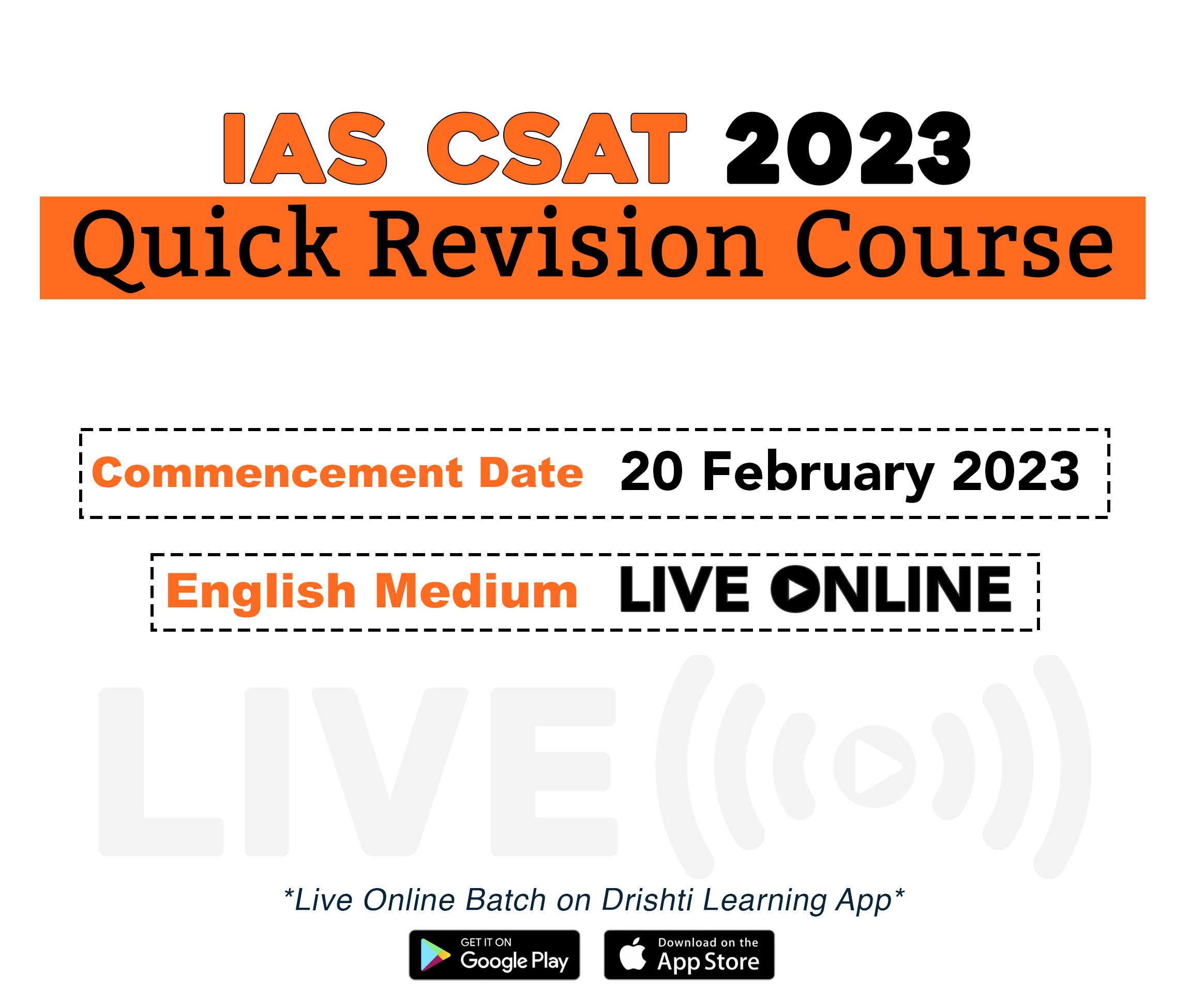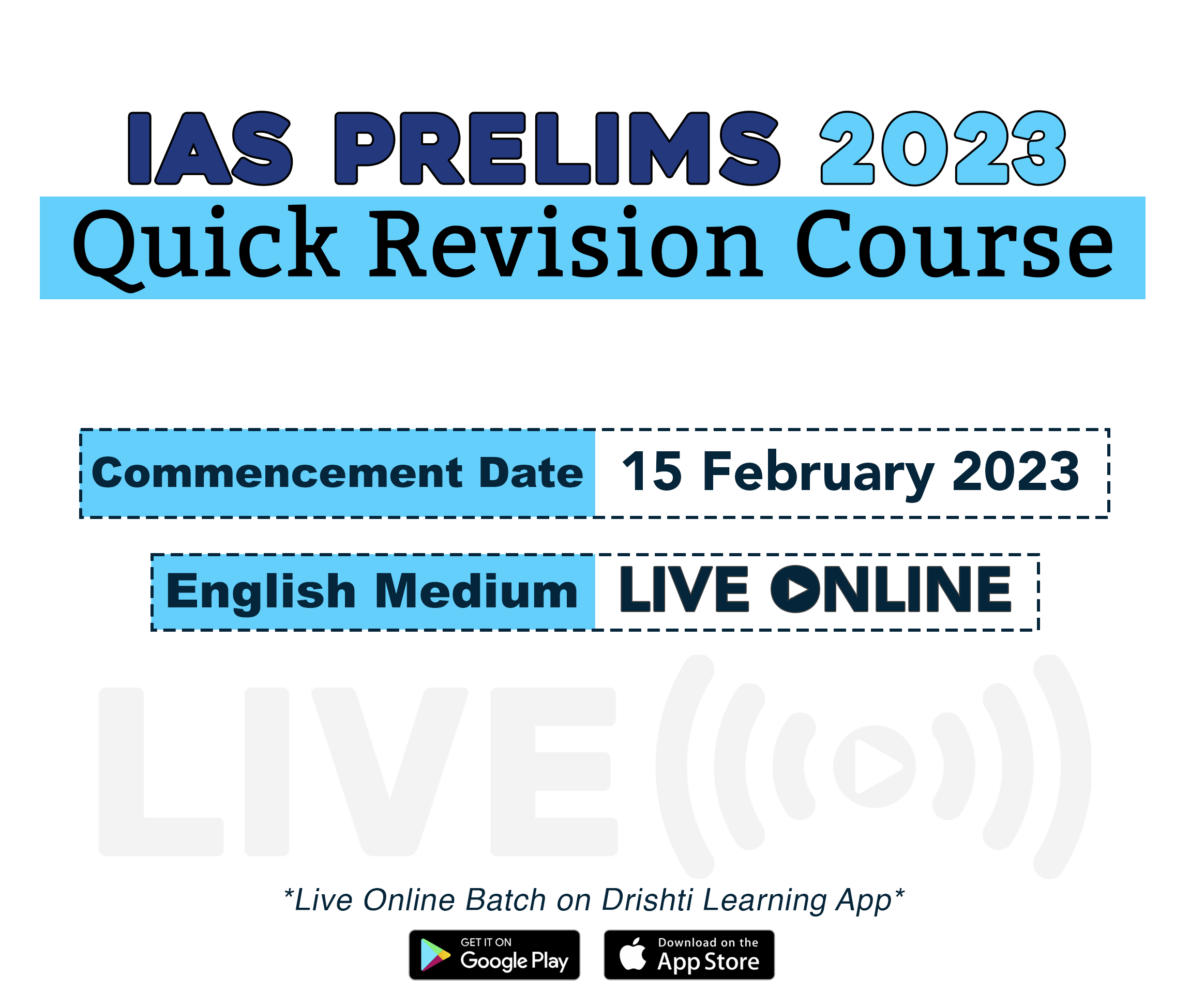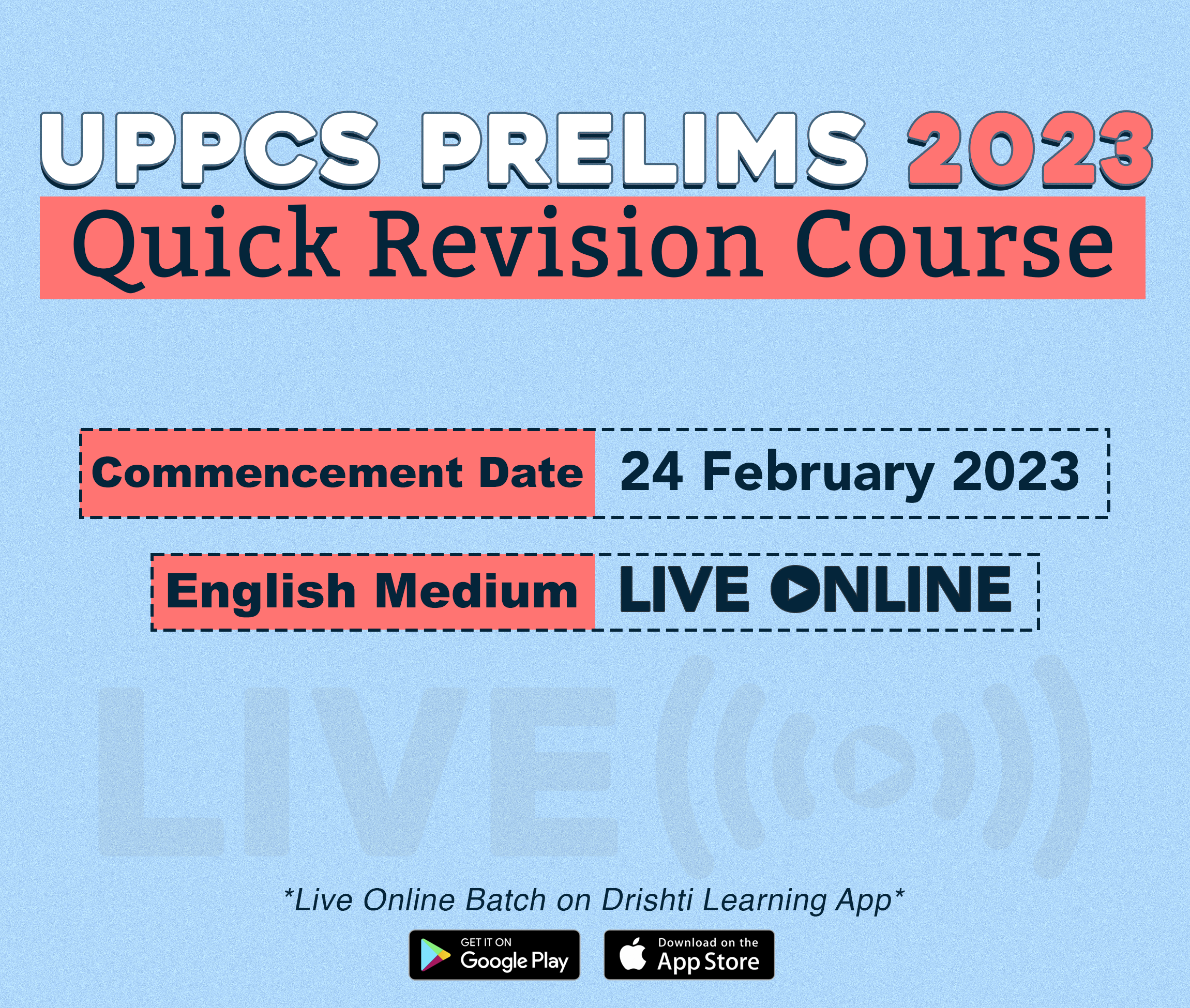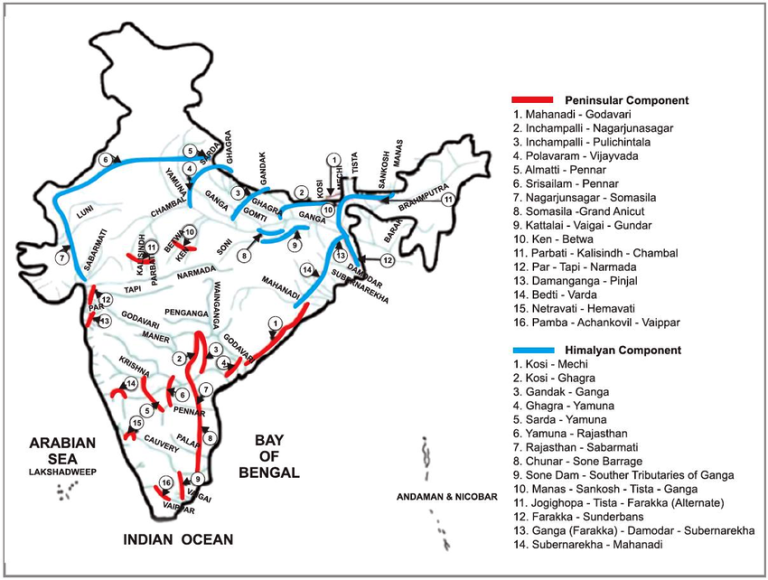Maps
Biodiversity & Environment
Skyglow
Prelims: Skyglow, Light Pollution, Circadian Clock, Dark Sky.
Mains: Skyglow and its implications.
Why in News?
Recently, a new study has found that non-natural light had increased the brightness of Skyglow, by 9.2-10% every year between 2011 and 2022 with significant ecological, health and cultural implications.
- Researchers have analyzed a global database of what the dimmest star visible from a particular location is; the database had more than 51,000 entries submitted by citizen scientists.
What is Skyglow?
- The Skyglow, is an omnipresent sheet of light across the night sky in and around cities that can block all but the very brightest stars from view.
- The brightening of the night sky over inhabited areas because of streetlights, security floodlights and outdoor ornamental lights cause the Skyglow.
- This light floods directly into the eyes of the Nocturnal (active at night) and also into the skies and misleads their path.
- 'Skyglow' is one of the components of light pollution.
What is the Scenario of Skyglow?
- Global
- The Skyglow had brightened around 6.5% over Europe, 10.4% over North America, and 7.7% over the rest of the world.
- The finding is significant because it disagrees with satellite-based data, which has indicated that the rate of increase has been around 2% per year.
- The discrepancy is probably the result of the satellites being unable to ‘sense’ blue light emitted by LEDs and to study light that is emitted parallel to the ground.
- India:
- A 2016 study reported that 19.5% of India’s population – the lowest fraction among G20 countries – experiences a level of skyglow that would at least keep the Milky Way galaxy out of sight and at most render “dark adaptation for human eyes” impossible.
- The effects include stimulating the cone cells in human eyes, which is possible only when an environment is considered to be well-lit.
- A 2017 study reported that between 2012 and 2016, India’s lit area increased by 1.07-1.09% and the average radiance of “stably lit areas” – e.g., excluding wildfires – increased by 1.05-1.07%.
What are the Implications of Skyglow?
- Wastes Energy and Money:
- Lighting that emits too much light or shines when and where it’s not needed is wasteful. Wasting energy has huge economic and environmental consequences.
- Disrupting the Ecosystem and Wildlife:
- Plants and animals depend on Earth’s daily cycle of light and dark rhythm to govern life-sustaining behaviors such as reproduction, nourishment, sleep and protection from predators.
- Scientific evidence suggests that artificial light at night has negative and deadly effects on many creatures including amphibians, birds, mammals, insects and plants.
- Ex: Lit beaches deter sea turtles from coming ashore to nest. Skyglow keeps trees from sensing seasonal variations.
- Clownfish eggs don’t hatch when exposed to artificial light at night, killing the offspring.
- Harming Human Health:
- Like most life on Earth, humans adhere to a Circadian Rhythm — our biological clock — a sleep-wake pattern governed by the day-night cycle. Artificial light at night can disrupt that cycle.
- A small 2009 review concluded that circadian disruption – which altered melatonin levels can cause – increased the risk of breast cancer among night-shift workers by 40%.
- The erasure of the night sky acts to erase Indigenous connection to the stars, acting as a form of ongoing cultural and ecological genocide.
What can be the Solutions?
- The researchers recommend light sources casting light at an angle below the plane of the horizon, capping the emissions of these sources and calibrating their output according to the total brightness at the spot being lit.
- Where lights cannot be turned off, they can be shielded so that they do not shed light into the surrounding environment and sky.
- The International Dark-Skies Association has certified more than 130 ‘International Dark Sky Places’, where artificial lighting has been adjusted to reduce skyglow and light trespass. However, nearly all are in developed countries in the northern hemisphere.
- Less-developed regions are often both species-rich and, currently, less light-polluted, presenting an opportunity to invest in lighting solutions before animals there are seriously affected.


Science & Technology
BharOS Software
Prelims: BharOS Operating System, Google and iOS, Atmanirbhar Bharat, Indigenous mobile operating system.
Mains: BharOS Operating System and its Significance.
Why in News?
Recently, an IIT Madras-incubated company has developed the BharOS.
What is BharOS?
- About:
- It is an indigenous mobile operating system (OS), like Android or iOS. It is focused on privacy and security.
- A mobile operating system is a software that is the core interface on a smartphone like Android by Google and iOS by Apple, which help smartphone users interact with their device and access its features, while ensuring safety.
- BharOS is a contribution towards the idea of a self-reliant India or ‘Atmanirbhar Bharat’ by creating a secure OS environment for India-based users.
- BharOS Services are currently being provided to organisations that have stringent privacy and security requirements and whose users handle sensitive information that requires confidential communications on restricted apps on mobiles.
- Such users require access to private cloud services through private 5G networks.
- It is an indigenous mobile operating system (OS), like Android or iOS. It is focused on privacy and security.
- Features:
- Native Over the Air:
- BharOS would offer Native Over the Air (NOTA) updates, meaning that security updates and bug fixes will be automatically installed rather than users having to check for updates and implementing them on their own.
- No Default Apps:
- No Default Apps (NDA) setting, means that users do not have to keep or use pre-installed apps in this mobile operating system.
- NDA is key as many pre-installed apps that currently ship with other smartphones can slow down the device or take a toll on battery life by acting as bloatware.
- Going with an NDA design for BharOS was intentional as it will let users have more control over the apps on their mobile phones based on the user’s trust in the app and the kind of data they store on their phone.
- No Default Apps (NDA) setting, means that users do not have to keep or use pre-installed apps in this mobile operating system.
- Private App Store Services:
- It will use a system known as Private App Store Services (PASS), which will examine and curate the apps that are safe for the users.
- Users will be able to use other apps, as long as they meet BharOS’ PASS standards.
- Native Over the Air:
- Significance:
- The project aims to reduce the dependence on foreign OS in smartphones and promote the use of locally developed technology.
- It is a huge leap forward to create an indigenous ecosystem and a self-reliant future.
- It aspires to put India on par with those few countries that currently possess such capabilities.
How BharOS is Different from Google Android?
- BharOS is based on Android Open-Source Project (AOSP) and is somewhat similar to Google Android. However, it does not come preloaded with Google services like in regular Google Android phones. So BharOS users are free to download only those apps that they like or prefer rather than being forced.
- Android phone with stock OS usually have Chrome set up as default browser. BharOS makers are looking to partner with DuckDuck Go for its default browser.
- DuckDuck Go is a privacy-focused browser with several privacy-centric features like anonymous browsing mode and Privacy Grade.


Indian Economy
Risk of Moving from Fossils to Clean Energy
Prelims: Clean Energy, Green Transition, Net zero, Fossil Fuels.
Mains: Challenges of Moving from Fossils to Clean Energy.
Why in News?
Recently, a study published in the Global Environmental Change journal, which states that India’s financial sector is highly exposed to the risks of the economy transitioning from being largely dependent on fossil fuel to clean energy.
What are the Findings?
- Transition can Negatively Impact:
- India’s financial sector is highly exposed to the activities related to fossil fuels and any transition from fossil fuel to clean energy will have a negative impact on this sector.
- 60% of lending to the mining sector is for oil and gas extraction.
- 20% of manufacturing sector debt is for petroleum refining and related industries.
- Electricity production is the largest source of carbon emissions, accounting for 5.2% of outstanding credit.
- India’s financial sector is highly exposed to the activities related to fossil fuels and any transition from fossil fuel to clean energy will have a negative impact on this sector.
- Shortage of Experts:
- There is a shortage of experts in India’s financial institutions who have the expertise to appropriately advise the institutions on transition from fossil fuel to clean energy.
- Only four of the ten major financial institutions surveyed collect information on environmental, social and governance (ESG) risks and these firms do not systematically incorporate that data into financial planning.
- Less Capacity to respond to Shocks and Stresses:
- High-carbon industries - power generation, chemicals, iron and steel, and aviation-account for 10% of outstanding debt to Indian financial institutions.
- However, these industries are also heavily indebted, and therefore have less financial capacity to respond to shocks and stresses.
- This will further expose India’s financial sector to the risk associated with the transition.
- More Polluting and More Expensive Energy Supply:
- The financial decisions of Indian banks and institutional investors are locking the country into a more polluting, more expensive energy supply.
- For example, only 17.5% of bank lending to the power sector has been to pure-play renewables.
- Consequently, India has much higher electricity from carbon-sources than the world average.
- Coal currently accounts for 44% of India’s primary energy sources and 70% of its power(electricity).
- The country’s coal-fired power plants have an average age of 13 years and India has 91,000 MW of new proposed coal capacity in the works, second only to China.
- According to the Draft National Electricity Plan 2022, coal’s share in the electricity generation mix will decrease to 50% by 2030.
- Potential:
- The current lending and investment patterns reveal that India’s financial sector is heavily exposed to potential transition risks.
- However, the other side of risks is the tremendous opportunity to move finance towards sustainable assets and activities.
- In 2021, India committed to reach net-zero emissions by 2070.
- India has also announced plans to source half of its electricity needs (50%) from non-fossil fuel sources by 2030.
- This will require financing to the order of at least a trillion dollars to meet these commitments.
UPSC Civil Services Examination, Previous Year Questions (PYQs)
Q. Give an account of the current status and the targets to be achieved pertaining to renewable energy sources in the country. Discuss in brief the importance of National Programme on Light Emitting Diodes (LEDs). (2016)
Q. Should the pursuit of carbon credits and clean development mechanisms set up under UNFCCC be maintained even though there has been a massive slide in the value of a carbon credit? Discuss with respect to India’s energy needs for economic growth. (2014)


Governance
National Tourism Day
For Prelims: National Tourism Day, Eco-tourism, Ministry of Tourism in India, Gross Domestic Product, Unsustainable tourism, Swadesh Darshan Scheme, Dekho Apna Desh Initiative, National Green Tourism Mission, National Tourism Day, World Tourism Day.
For Mains: Status of the Tourism Sector in India, Challenges Related to the Tourism Sector, Initiatives Related to Tourism in India.
Why in News?
National Tourism Day is celebrated every year on January 25 to recognize India's natural beauty and raise awareness about the importance of tourism for the Indian economy.
- India is one of the top tourist attractions for visitors from all around the globe. Hence tourism holds so much importance in India, both in cultural and economic terms.
What is the Status of the Tourism Sector in India?
- About:
- India provides a diverse portfolio of tourism, including eco-tourism, cruises, business, sports, educational, rural, and medical travel.
- The Ministry of Tourism in India is responsible for formulating the country's national policies for developing and promoting tourism.
- It also collaborates with local, national, and international organisations.
- Contribution to Economy:
- India ranks 6th according to World Travel and Tourism Council in terms of Travel & Tourism total contribution to GDP in 2021.
- Travel & Tourism contributed 5.8% to GDP and the sector created 32.1 million jobs, which is equivalent to 6.9% of total jobs in 2021.
- Also, India is currently ranked 54th in World Economic Forum’s Travel & Tourism Development Index (2021).
- According to Global Data, international arrivals to the country is forecast to reach 7.2 million in 2022 and 8.6 million in 2023.
- India ranks 6th according to World Travel and Tourism Council in terms of Travel & Tourism total contribution to GDP in 2021.
- Challenges Related to the Tourism Sector:
- Lack of Training and Skill Development: Given that the tourism industry is a labour-intensive sector, it is undeniable that practical training plays an important role.
- But over the years, availability of trained manpower has not kept pace with growth of the tourism sector in India.
- Overexploitation of Resources: Unsustainable Tourism often puts pressure on natural resources through overconsumption especially in Himalayan regions of India, where resources are already scarce.
- Unsustainable tourism also affects local land use, resulting in soil erosion, increased pollution, and loss of natural habitats of endangered species.
- Lack of Infrastructure and Security: It is a major challenge for the Indian tourism sector. It includes a lack of multi cuisine restaurants, basic health facilities, public transport and hygiene and safety & security of tourists.
- Initiatives Related to Tourism in India:
- Swadesh Darshan Scheme
- Draft National Tourism Policy 2022
- Dekho Apna Desh Initiative
- National Green Tourism Mission
- National Tourism Day
- World Tourism Day (27th September)
- Lack of Training and Skill Development: Given that the tourism industry is a labour-intensive sector, it is undeniable that practical training plays an important role.
How can Sustainable Tourism be Promoted in India?
- Responsible, Inclusive, Green and Hospitable Tourism (RIGHT): To ensure better accountability, all stakeholders involved in tourism management need to be governed by a common umbrella of regulations.
- It is important to promote green tourism with minimal disturbance to the natural ecosystem and maintain sustainable infrastructure so that warm hospitality can thrive.
- Unified Tourism System: An extensive market research and evaluation exercise can be undertaken in order to identify desired tourist destinations across the country and major markets and segments.
- It can be followed by developing a digital unified system (promoting the essence of Ek Bharat Shreshtha Bharat), to map these places and promote them through social media.
- One State One Tourism Mascot: State animals can be used as advertising mascots for Tourism Departments of different states as an innovative tool to promote tourism education, especially among children
- Presidency of G20: India has an opportunity to position itself as a major tourism destination during India’s presidency of the G20 (December 2022- November 2023).
- India’s age-old dictum of ‘Atithi Devo Bhava’ will come to the fore as it welcomes delegates from different countries.
UPSC Civil Services Examination, Previous Year Question (PYQ)
Q.1 How can the mountain ecosystem be restored from the negative impact of development initiatives and tourism? (2019)
Q.2 The states of Jammu and Kashmir, Himachal Pradesh and Uttarakhand are reaching the limits of their ecological carrying capacity due to tourism. Critically evaluate. (2015)


Biodiversity & Environment
Ken-Betwa River Link Project
Prelims: Ken-Betwa River Link project, Panna Tiger Reserve, NGT, National Perspective Plan.
Mains: Ken-Betwa River Link project and associated issues.
Why in News?
Recently, the Ministry of Jal Shakti has chaired a meeting on Ken-Betwa Link Project (KBLP), stating that it is the “flagship” project of the national government and it “is crucial for the water security and socio-economic development of Bundelkhand region”.
- In December 2021, the Union Cabinet approved KBLP at a total cost of Rs 44,605 crore. In this project.
- The project has been delayed due to political and environmental issues.
What is the Ken-Betwa Link?
- About:
- The Ken-Betwa Link Project (KBLP) is the river interlinking project that aims to transfer surplus water from the Ken River in Madhya Pradesh (MP) to Betwa in Uttar Pradesh (UP) to irrigate the drought-prone Bundelkhand region.
- The region spread across the districts of two states mainly Jhansi, Banda, Lalitpur and Mahoba districts of UP and Tikamgarh, Panna and Chhatarpur districts of MP.
- The project involves building a 77-metre tall and a 2-km wide Dhaudhan dam (to be built within Panna Tiger Reserve) and a 230-km canal.
- Ken-Betwa is one of the 30 river interlinking projects conceived across the country.
- The Ken-Betwa Link Project (KBLP) is the river interlinking project that aims to transfer surplus water from the Ken River in Madhya Pradesh (MP) to Betwa in Uttar Pradesh (UP) to irrigate the drought-prone Bundelkhand region.
- Significance:
- It will not only accelerate the water conservation by construction of a multipurpose dam but will also produce 103 MW of hydropower and will supply drinking water to 62 lakh people.
What are the Concerns Related to the Project?
- Environmental:
- Because of certain environmental and wildlife conservation concerns like passing of the project though critical tiger habitat of panna tiger reserve, the project is stuck in for the approval from National Green Tribunal (NGT), and other higher authorities.
- Economic:
- There is a huge economic cost attached with the project implementation and maintenance, which has been rising due to delays in project implementation.
- Social:
- Reconstruction and rehabilitation caused due to displacement resulting from the implementation of the project will involve social cost as well.
- They are also concerned that the project will endanger the water security of Panna.
- Legal:
- There are also significant legal problems with the approval granted to the KBLP.
- Approval by the Standing Committee of the National Board for Wildlife to the Ken-Betwa link Project has not been proved to be necessary for the improvement and better management of the wildlife therein as provided in Section 35(6) of the Wildlife (Protection) Act, 1972.
What is the National Perspective Plan for Interlinking of Rivers?
- The National River Linking Project (NRLP) formally known as the National Perspective Plan, envisages the transfer of water from water ‘surplus’ basins where there is flooding, to water ‘deficit’ basins where there is drought/scarcity, through inter-basin water transfer projects.
- Under the National Perspective Plan (NPP), the National Water Development Agency (NWDA), has identified 30 links (16 under the Peninsular Component and 14 under the Himalayan Component) for the preparation of feasibility reports (FRs).
- The NPP for transferring water from water-surplus basins to water-deficit basins was prepared in August 1980.
What are Ken and Betwa Rivers?
- Ken and Betwa rivers originate in MP and are the tributaries of Yamuna.
- Ken meets with Yamuna in Banda district of UP and with Betwa in Hamirpur district of UP.
- Rajghat, Paricha and Matatila dams are over Betwa river.
- Ken River passes through Panna tiger reserve.
UPSC Civil Services Examination, Previous Year Question (PYQ)
Q. The interlinking of rivers can provide viable solutions to the multi-dimensional inter-related problems of droughts, floods, and interrupted navigation. Critically examine. (2020)


Governance
Indianisation of the Judiciary
For Prelims: Supreme Court, Chief Justice of India, All India Judicial Services (AIJS).
For Mains: Initiatives Related to Judiciary in India, Challenges Related to the Indian Judicial System.
Why in News?
Recently, during the inauguration of online e-inspection software the Chief Justice of India (CJI) stated that the judgments delivered by the Supreme Court will now be translated into four languages —Hindi, Tamil, Gujarati and Odia.
- This initiative will result in the Indianisation of Judiciary which is the need of the hour.
What is Indianisation of the Judiciary?
- Indianised Judiciary:
- According to the CJI, courts need to be litigant-centric while simplification of justice delivery should be the pressing concern.
- The CJI specified that the Indianisation of the Judiciary means the localization of the justice delivery system.
- India’s Age-Old Judiciary System:
- India has the oldest judiciary system in the world dating back to 5000 years.
- In history, India has had a very effective, trustworthy and democratic judicial system but most of the statements in judgements nowadays are taken from western jurisprudence.
- India’s own ancient system of delivery of justice is given much less recognition.
- Related Recommendations:
- Malimath Committee Report: Malimath Committee (2000) suggested that a Schedule to the Code be brought out in all regional languages so that the accused knows his/her rights, as well as how to enforce them and whom to approach when there is a denial of those rights.
- Law Commission, 1958: The All India Judicial Services (AIJS) was first proposed by the 14th report of the Law Commission in 1958.
- A Law Commission report (1987) recommended that India should have 50 judges per million population as against 10.50 judges (then).
What are the Initiatives Taken for Improving the Judicial System?
- Video Conferencing (VC):
- Video conferencing has been the mainstay during the lockdown.
- The Delhi high court has been the only court which has heard a maximum number of cases through VC.
- Video conferencing has been the mainstay during the lockdown.
- AI based SUPACE Portal:
- In May 2020, the Supreme Court launched an Artificial Intelligence (AI) based portal Supreme Court Portal for Assistance in Court’s Efficiency (SUPACE) in the judicial system aimed at assisting judges with legal research.
- National Mission for Justice Delivery and Legal Reforms:
- The Mission has been pursuing a coordinated approach for phased liquidation of arrears and pendency in judicial administration, which, inter-alia, involves better infrastructure for courts, including computerization, an increase in strength of subordinate judiciary, policy and legislative measures.
- Improving Infrastructure for Judicial Officers of District and Subordinate Courts:
- Rs. 9291.79 crores have been released since the inception of the Centrally Sponsored Scheme (CSS) for the Development of Infrastructure Facilities.
- The number of court halls has also increased significantly.
- Leveraging Information and Communication Technology (ICT):
- The Government has been implementing the e-Courts Mission Mode Project throughout the country for information and communication technology enablement of district and subordinate courts.
- The number of computerised district & subordinate courts has increased to 18,735 so far.
What are the Challenges Related to the Indian Judicial System?
- Huge Pendency of Cases: As many as 30 million cases are still backlogged in India’s court system.
- Over 4 million of them involve the High Court, and 60,000 involve the Supreme Court. The fact that this figure keeps rising demonstrates the inadequacies of the justice system.
- Undertrial Prisoners: The majority of Indian prison inmates are still awaiting the verdict on their cases, and they are being held there until that time.
- A majority of people end up serving a longer sentence in prison than they would have otherwise incurred, and the costs, suffering, and anguish associated with defending themselves in court are more costly and painful than serving the actual sentence.
- Recruitment Delays: Judicial posts are not filled as quickly as necessary. For a country of 135 million, there are only about 25000 judges.
- There are almost 400 vacancies in the high courts. And around 35% of the posts are lying vacant in the lower judiciary.
- Favouritism and Nepotism in CJI Appointment: Because there are no specific criteria for evaluating candidates for the post of CJI, nepotism and favouritism are common.
- Consequently, there is no transparency in the judicial appointment as well as they may not accountable to any administrative body.
- British Origin of Indian Judiciary: The genesis of India’s current judicial system can be traced back to the colonial system of judiciary which are not exactly best suited to the needs of the Indian population.
What can be the Way Forward?
- Transforming the Appointment System: Vacancies must be filled immediately, and it is necessary to establish an appropriate timeline for the appointment of judges and to provide the suggestions in advance.
- Another significant element that can unquestionably aid India in developing a better judicial system is the AIJS.
- Reforming Investigation: India lacks an active investigation policy, which leads to many innocent people being wrongfully charged and punished.
- Therefore, the Indian government needs to frame an investigation policy that is effective, proactive and comprehensive, taking into account all the stakeholders in the justice system.
- Innovative Solutions to Justice: The solution to clearing the massive backlog of cases requires more than just appointing more judges, it also requires innovative solutions.
- The recently, launched initiative is considered an important step as it is important to understand that the language namely English which is used in the courts, is not comprehensible for all the citizens.
- It will not be counted as access to justice unless citizens are able to access and understand the judgements in a language that people speak and comprehend.
- The recently, launched initiative is considered an important step as it is important to understand that the language namely English which is used in the courts, is not comprehensible for all the citizens.
UPSC Civil Services Examination Previous Year Question (PYQ)
Prelims
Q1. With reference to National Legal Services Authority, consider the following statements: (2013)
- Its objective is to provide free and competent legal services to the weaker sections of the society on the basis of equal opportunity.
- It issues guidelines for the State Legal Services Authorities to implement the legal programmes and schemes throughout the country.
Which of the statements given above is/are correct?
(a) 1 only
(b) 2 only
(c) Both 1 and 2
(d) Neither 1 nor 2
Ans: (c)
Q2. In India, Legal Services Authorities provide free legal services to which of the following type of citizens? (2020)
- Person with an annual income of less than `1,00,000
- Transgender with an annual income of less than `2,00,000
- Member of Other Backward Classes (OBC) with an annual income of less than `3,00,000
- All Senior Citizens
Select the correct answer using the code given below:
(a) 1 and 2 only
(b) 3 and 4 only
(c) 2 and 3 only
(d) 1 and 4 only
Ans: (a)
Q3. With reference to the Indian judiciary, consider the following statements:
- Any retired judge of the Supreme Court of India can be called back to sit and act as a Supreme Court judge by the Chief Justice of India with the prior permission of the President of India.
- A High Court in India has the power to review its own judgement as the Supreme Court does.
Which of the statements given above is/are correct?
(a) 1 only
(b) 2 only
(c) Both 1 and 2
(d) Neither I nor 2
Ans: (a)
Mains
Q. Critically examine the Supreme Court’s judgement on ‘National Judicial Appointments Commission Act, 2014’ with reference to the appointment of judges of higher judiciary in India. (150 words)


Agriculture
Agriculture Infrastructure Fund
For Prelims: Farmer Producer Organisations (FPOs), Self Help Groups (SHGs), Management Information System (MIS), NABARD, Stubble Burning, Crop diversification, Rainwater Harvesting, Genetic engineering.
For Mains: Agriculture Infrastructure Fund(AIF), Issues related to Post Harvest Management.
Why in News?
Agriculture Infrastructure Fund (AIF) crosses Rs.30,000 crore mark of capital mobilisation for projects in agriculture sector for creation of post-harvest management infrastructure and community farming assets.
What is Agriculture Infrastructure Fund?
- About:
- AIF is a financing facility launched in July 2020.
- It aims to provide all-around financial support to the farmers, agri-entrepreneurs, farmer groups like Farmer Producer Organisations (FPOs), Self Help Groups (SHGs), Joint Liability Groups (JLGs) etc. and many others to create post-harvest management infrastructure and build community farming assets throughout the country.
- Features:
- AIF provides support of 3% interest subvention, credit guarantee support through Credit Guarantee Fund Trust for Micro and Small Enterprises (CGTMSE) scheme for loan of up to Rs. 2 crore and facility of convergence with other Central and State Government schemes.
- AIF is helping in reducing post-harvest losses by creating and modernising agriculture infrastructure, which includes primary processing centres for vegetables, hi-tech hubs for rental of agricultural machinery.
- Management:
- The fund will be managed and monitored through an online Management Information System (MIS) platform. It will enable all the qualified entities to apply for loans under the Fund.
- The National, State and District level monitoring committees will be set up to ensure real-time monitoring and effective feed-back.
- The fund will be managed and monitored through an online Management Information System (MIS) platform. It will enable all the qualified entities to apply for loans under the Fund.
What is Post Harvest Management?
- About:
- Post-harvest management refers to the activities and techniques used to preserve and protect crops after they have been harvested.
- This includes activities such as cleaning, sorting, grading, packaging, storage, and transportation.
- The goal of post-harvest management is to maintain the quality and safety of the crops, as well as to extend their shelf life, so that they can be sold and consumed at a later time.
- Post-harvest management refers to the activities and techniques used to preserve and protect crops after they have been harvested.
- Challenges:
- Lack of Convenient Access to Credit: A convenient line of credit is not available to small and marginal farms. As per the NABARD 2018 survey, farmers with smaller plot sizes took a greater share of loans from the non-institutional lenders than did farmers with larger plot sizes (> 2 hectares).
- This indicates that more small and marginal farmers rely on (expensive) informal sources of credit than large ones.
- Stubble Burning: The problem of ‘on-farm’ burning or stubble burning is intensifying in recent years due to shortage of human labour, high cost of removing the crop residue from the field and mechanised harvesting of crops, contributing majorly to air pollution in Northern India.
- Infrastructure Bottlenecks: More than 30% of the produce from farm gate is lost due to inadequate cold chain infrastructure.
- The NITI Aayog cited a study that estimated annual post-harvest losses close to Rs 90,000 crore.
- Lack of all-weather roads and connectivity make supply erratic.
- Lack of Convenient Access to Credit: A convenient line of credit is not available to small and marginal farms. As per the NABARD 2018 survey, farmers with smaller plot sizes took a greater share of loans from the non-institutional lenders than did farmers with larger plot sizes (> 2 hectares).
How can India Harvest Rich Returns from Agriculture?
- Integrating Traditional and Frontier Technologies: Rainwater harvesting and recycling of organic waste for plant nutrient, pest management, etc., are examples of traditional technologies that can be used to complement frontier technologies like tissue culture, genetic engineering, to achieve higher productivity.
- Upgrading Agricultural Surplus Management: An infrastructure upgrade and development program are needed for post-harvest handling, seed, fertiliser and agrochemical quality regulation.
- Additionally, it is necessary to promote grading and standardisation of procurement centres.
- Harvesting Rich Returns Through Market Integration: There is a need to streamline domestic markets and put in place the infrastructure and institutions to connect local markets with national and global markets.
- To facilitate smooth integration between domestic and world markets, and to manage trade liberalisation more effectively, India needs a nodal institution that can monitor world and domestic price movements closely and take timely and appropriate measures to avoid major shocks.
UPSC Civil Services Examination, Previous Year Question (PYQ)
Prelims
Q.1 How is permaculture farming different from conventional chemical farming? (2021)
- Permaculture farming discourages monocultural practices but in conventional chemical farming, monoculture practices are predominant.
- Conventional chemical farming can cause an increase in soil salinity but the occurrence of such phenomenon is not observed in permaculture farming.
- Conventional chemical farming is easily possible in semi-arid regions but permaculture farming is not so easily possible in such regions.
- Practice of mulching is very important in permaculture farming but not necessarily so in conventional chemical farming.
Select the correct answer using the code given below.
(a) 1 and 3
(b) 1, 2 and 4
(c) 4 only
(d) 2 and 3
Ans: (b)
Q.2 Which of the following is the chief characteristic of ‘mixed farming’? (2012)
(a) Cultivation of both cash crops and food crops
(b) Cultivation of two or more crops in the same field
(c) Rearing of animals and cultivation of crops together
(d) None of the above
Ans: (c)
Q.3 With reference to micro-irrigation, which of the following statements is/are correct? (2011)
- Fertiliser/nutrient loss can be reduced.
- It is the only means of irrigation in dry land farming.
- In some areas of farming, receding ground water tables can be checked.
Select the correct answer using the codes given below:
(a) 1 only
(b) 2 and 3 only
(c) 1 and 3 only
(d) 1, 2 and 3
Ans: (c)
Mains
Q.1 What are the present challenges before crop diversification? How do emerging technologies provide an opportunity for crop diversification? (2021)


Rapid Fire
Rapid Fire Current Affairs
Water Hyacinth Invasion in Sankhya Sagar
Sankhya Sagar - an artificial lake in Madhya Pradesh has virtually disappeared under a thick layer of Water Hyacinth - an invasive aquatic plant. Sankhya Sagar was declared a Ramsar site in July 2022, and helps maintain the ecological balance of the Madhav National Park.
The lake is home to 19 indigenous fish species and in turn piscivorous birds along with Marsh crocodile (WPA 1972; Schedule I).
Water Hyacinth, though, native to South Africa, has naturalised itself in many other parts of the world. However, it can’t be outrightly placed in a harmful or useful category - on one hand, it acts as a water purifier by removing heavy metals present in small quantities while on the other, once it covers the entire surface of a water body, it does not allow sunlight to penetrate the water and also starts depleting oxygen.
The water hyacinth in Sankhya Sagar is leading to the death of native species; its presence also indicates high nitrogen levels in the lake.
Read More - Water Hyacinth, Ramsar Sites
Ops Alert Exercise
In view of the upcoming Republic Day celebrations, the Border Security Force (BSF) has started an "Ops Alert'' exercise (21-28 Jan 2023) to enhance security along the India-Pakistan border from from Sir Creek (marshy area) to Kutch (Gujarat) and Barmer (Rajasthan) with the objective of "thwarting any ill designs of anti-national elements".
To enhance its security, "permanent vertical bunkers" of concrete are being constructed for the first time to station BSF troops right at the strategically significant Sir Creek and ‘Harami Nalla’ marshy area.
The Union Home Ministry has sanctioned a Rs. 50-crore fund for the construction of 8 multi-storey bunkers cum observation posts in this area in view of the “constant infiltration of Pakistani fishermen and fishing boats in the area”.
Read More - Border Security Force (BSF)
TROPEX 2023
The 2023 edition of Indian Navy’s major maritime exercise TROPEX, was conducted in the Indian Ocean Region. The Theatre Level Operational Readiness Exercise (TROPEX) is conducted biennially and witnesses participation from all Indian Navy units and also Indian Army, Indian Air Force and Indian Coast Guard.
TROPEX 23 is being conducted over a duration of three months from Jan - Mar 23. As part of the exercise, all surface combatants of the Indian Navy including Destroyers, Frigates, Corvettes as well as submarines and aircraft are put through complex maritime operational deployments to validate and refine the Navy’s Concept of Operations including operational logistics and interoperability with other Services.
Read More - TROPEX, Indian Navy
National Girl Child Day
On January 24, India celebrates National Girl Child Day with the objective of highlighting the prejudice and injustice that girl children face. This day also encourages awareness of women's rights in our country. The day was established in 2008 by the Ministry of Women and Child Development.
The government of India has taken many initiatives for the betterment of the girls. 'Beti Bachao and Beti Padhao (BBBP)' is one such initiative. BBBP was recently revised.
Read More - National Girl Child Day, Revised Beti Bachao Beti Padhao Scheme












